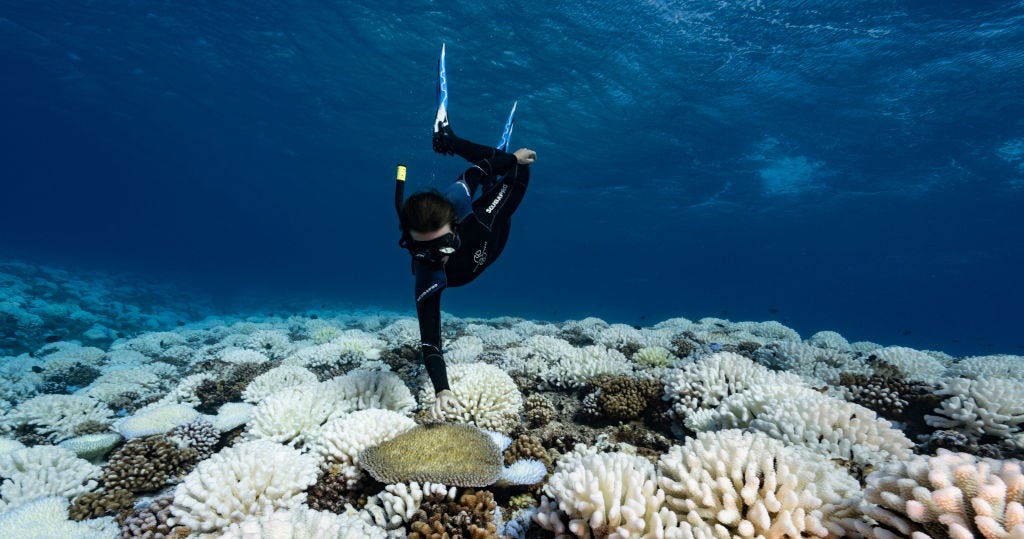In March of this year, Australia’s Great Barrier Reef experienced its worst bleaching event on record. About a quarter of the coral on the reef expelled the algae that usually lives in its tissues. Without the algae, the multicolored coral turned ghostly white.
Disrupting this symbiotic relationship can stunt coral’s growth, hinder its reproduction, and leave it vulnerable to disease. Marine animals like fish, crustaceans, and reptiles depend on coral to survive. Reefs provide them a place to dwell, hunt, and hide.
Bleaching isn’t limited to the Great Barrier Reef, which, at 134,630 square miles, is one of the biggest living structures in the world. Reefs in the Seychelles, New Caledonia, Florida, and Hawaii are also suffering. And the biggest contributor to these bleaching events is the rise in ocean temperatures due to global warming.
Though coral bleaching will not stop until the climate crisis itself is addressed, politicians, scientists, and activists are scrambling to figure out shorter-term ways to save coral reefs from being destroyed.
An unlikely tool for doing so has emerged from the tech sector: 3D printing. To stop the bleaching, scientists need to better understand how coral reefs function in the wild, and 3D printing is useful because it lets them replicate coral in the lab. Previously, researchers would have to take coral out of its natural environment in order to study it.
Scientists at multiple institutions are now 3D-printing replicas of the corals that are dying off, potentially providing new homes for the algae. A team at Cambridge University and the University of California, San Diego, published a paper about their recent effort in Nature Communications in April. Lead author Daniel Wangpraseurt, PhD, a Marie Curie Postdoctoral Fellow at the University of Cambridge, tells OneZero the development is “an important step” for understanding the changes corals undergo during high-stress events like bleaching.
“At the same time, the field of 3D bioprinting is rapidly developing, primarily driven by human tissue engineering,” Wangpraseurt says. “With such rapid progress, I do not consider it unrealistic that our approach can be further developed to help in actively restoring coral reefs in the future.”
#science #coral-reefs #environment #3d-printing #climate #data science
